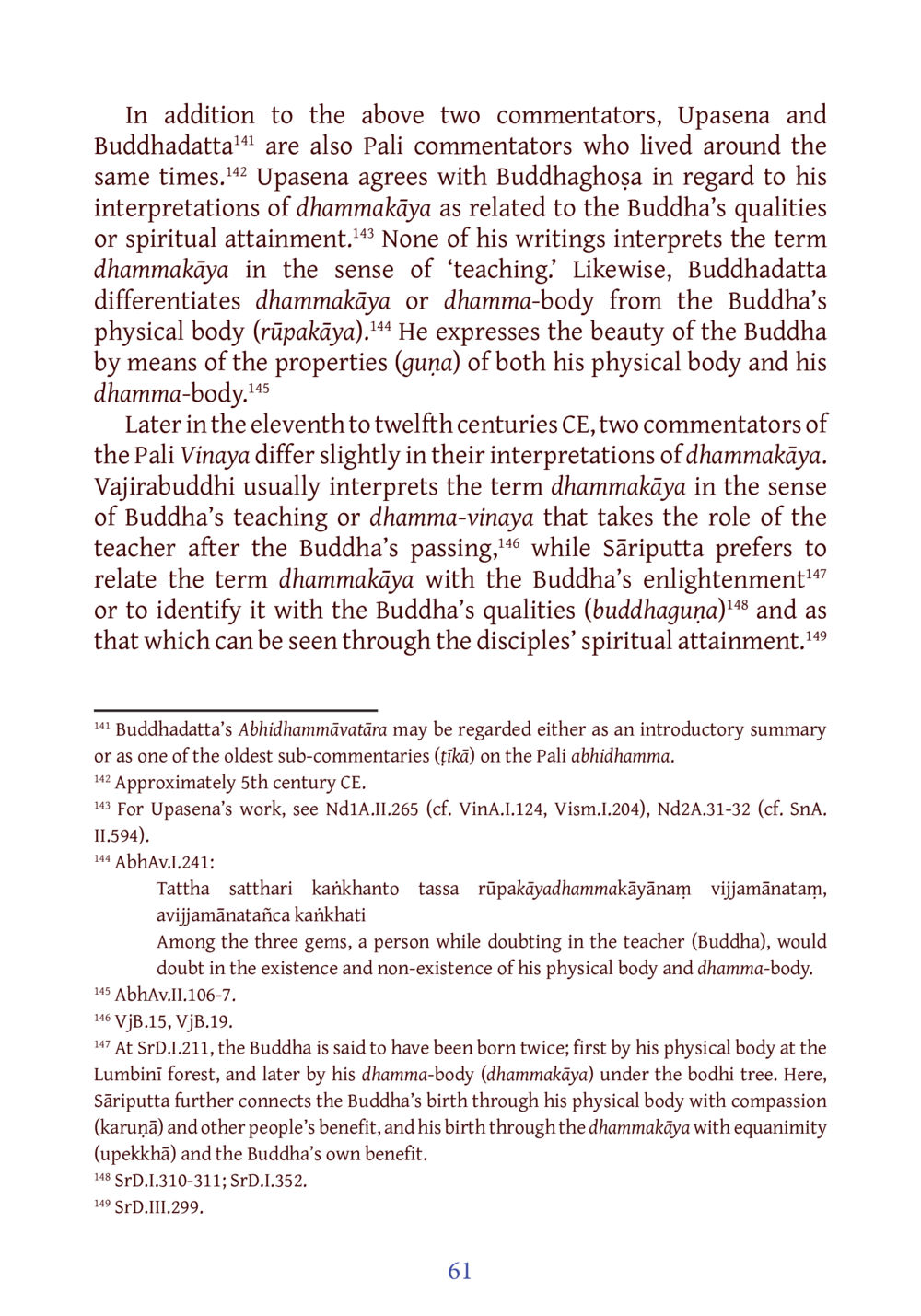Interpretations of Dhammakāya in Pali Commentaries : หน้า 82/141
DIRI Journal : หน้า 82/141 Explores various interpretations of dhammakāya by Pali commentators Upasena, Buddhadatta, Vajirabuddhi, and Sāriputta.
0 ครั้ง

สรุปเนื้อหา
The text discusses the interpretations of the term 'dhammakāya' by various Pali commentators, focusing on Upasena and Buddhadatta, who align with Buddhagōsha, and their views on the Buddha's qualities and spiritual attainment. It also highlights differences in interpretation by Vajirabuddhi, who sees dhammakāya as Buddha’s teaching post his passing, while Sāriputta connects it with the Buddha's enlightenment and attributes. The distinctions between dhamma-body and physical body are also elaborated. For further insights, visit dmc.tv.
หัวข้อประเด็น
-Pali commentaries
-Interpretation of dhammakāya
-Buddha's qualities
-Buddhagōsha
-Vajirabuddhi
-Sāriputta
ข้อความต้นฉบับในหน้า
In addition to the above two commentators, Upasena and Buddhadatta141 are also Pali commentators who lived around the same times.142 Upasena agrees with Buddhagōsha in regard to his interpretations of dhammakāya as related to the Buddha’s qualities or spiritual attainment.143 None of his writings interprets the term dhammakāya in the sense of ‘teaching.’ Likewise, Buddhadatta differentiates dhammakāya or dhamma-body from the Buddha’s physical body (rūpakāya).144 He expresses the beauty of the Buddha by means of the properties (guṇa) of both his physical body and his dhamma-body.145
Later in the eleventh to twelfth centuries CE, two commentators of the Pali Vinaya differ slightly in their interpretations of dhammakāya. Vajirabuddhi usually interprets the term dhammakāya in the sense of Buddha’s teaching or dhamma-vinaya that takes the role of the teacher after the Buddha’s passing,146 while Sāriputta prefers to relate the term dhammakāya with the Buddha’s enlightenment147 or to identify it with the Buddha’s qualities (buddhaguṇa)148 and as that which can be seen through the disciples’ spiritual attainment.149
หน้าหนังสือทั้งหมด

1

2

3

4

5

6

7

8

9

10

11

12

13

14

15

16

17

18

19

20

21

22

23

24

25

26

27

28

29

30

31

32

33

34

35

36

37

38

39

40

41

42

43

44

45

46

47

48

49

50

51

52

53

54

55

56

57

58

59

60

61

62

63

64

65

66

67

68

69

70

71

72

73

74

75

76

77

78

79

80

81

82

83

84

85

86

87

88

89

90

91

92

93

94

95

96

97

98

99

100

101

102

103

104

105

106

107

108

109

110

111

112

113

114

115

116

117

118

119

120

121

122

123

124

125

126

127

128

129

130

131

132

133

134

135

136

137

138

139

140

141
หนังสือที่เกี่ยวข้อง
Load More
